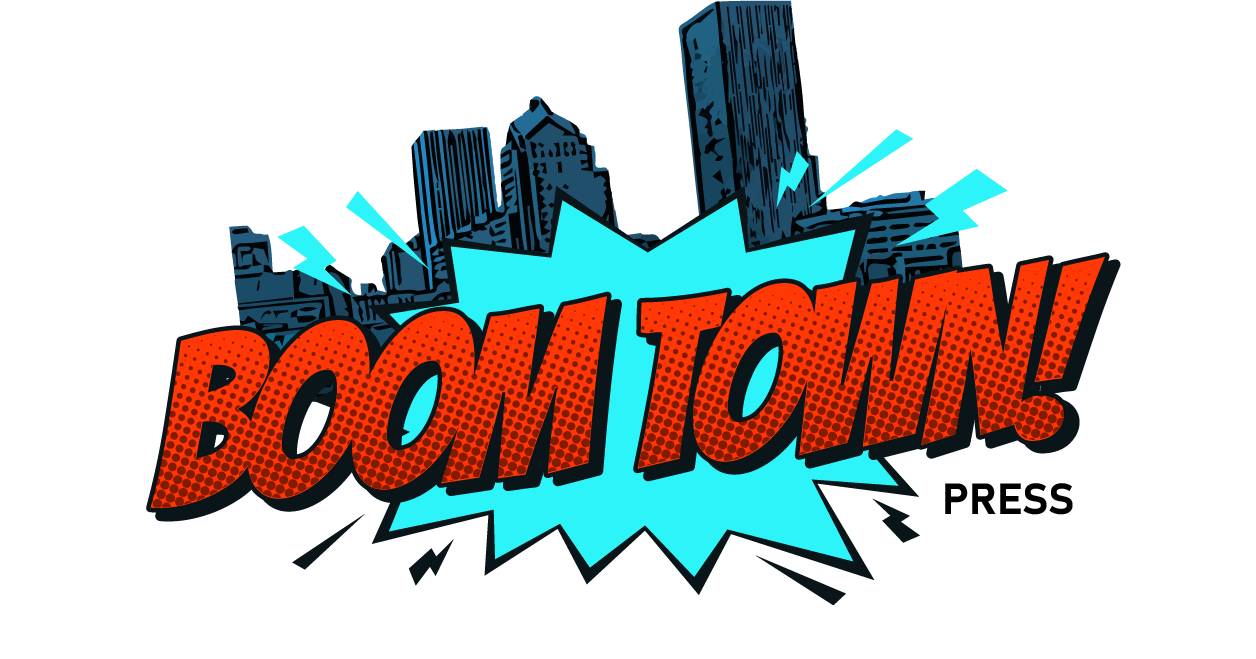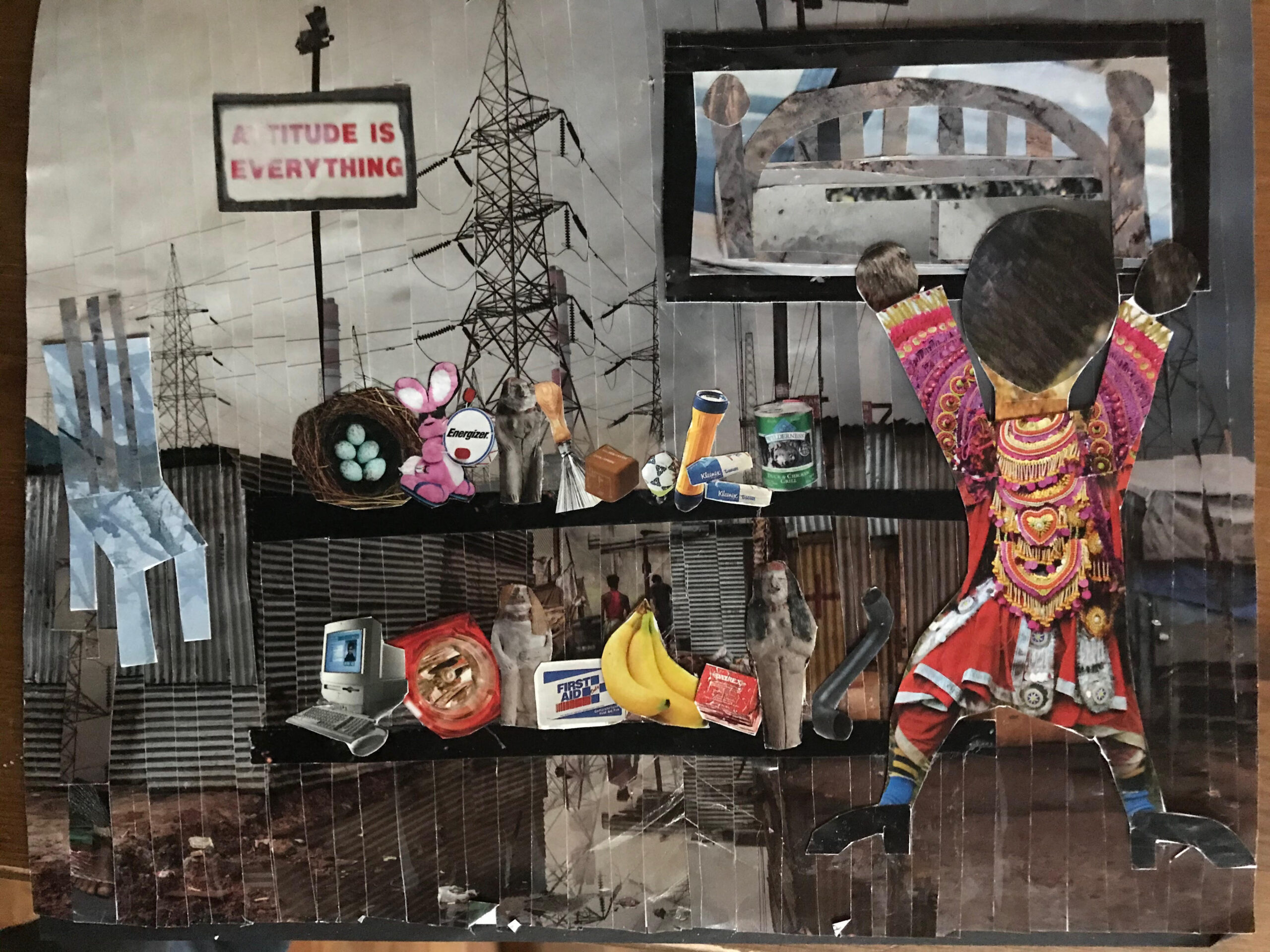by Brian Geldin of Mañón Media Management
Making a living solely on your art can be incredibly difficult and with inflation, rising costs and the advent of AI, many are wondering if it’s even possible today? In pondering the answer to this existential question, I did a Q&A with two acclaimed artists, Erica Bryant and Samson Tonton, each from different disciplines, who talk about their own experiences of becoming an artist, and how they are making their dreams come true.
Note: After reading the Q&A, you will find links to resources for artists including grants to help guide you on your journey of becoming a professional artist.

Erica Bryant (EB) is a collage artist whose work is primarily inspired by dreams. Using hand-cut shards of paper, she honors valuable inventions of sleeping minds and bizarre creations of the unconscious. When people look at her work, Erica wants them to enjoy the freedom of being asleep, when the constraints of time, space, and logic don’t apply. A self-taught artist, she draws inspiration from the work of James Hampton, Purvis Young, Josephine Tota, and the Gees Bend Quilters. Her collages have appeared in juried exhibitions in galleries in California, Florida, Georgia, Louisiana, Massachusetts and New York, including a 2022 solo exhibition “40/40 Vision” at Rochester Contemporary Art Center. In waking life, Erica is the Associate Director of Writing at the Vera Institute of Justice, an organization that works to end mass incarceration. She was born in Rochester, NY, during a mid-April snowstorm. For more information on Erica Bryant, visit https://ericadreams.com/

Samson Tonton (ST) is a Haitian-American artist and elementary arts educator based in Norwich, Connecticut. His artwork provides a new lens through which to view the world, one that celebrates the multifaceted elements of Black culture. With his distinctive cubism style and powerful cultural message, he’s at the forefront of a new generation of Black artists breaking barriers and redefining the art world. Tonton was featured in an Ebony profile in 2023, and for World Mental Health Day 2023, he was featured in a thought-provoking essay where he discusses helping people find solace and healing through art in the Mama Glow Foundation’s Mental Health Pocket Guide. His painting “The Mask” is currently on exhibit at the Slater Memorial Museum in Norwich, Conn., through Feb. 29. For more information on Samson Tonton and to purchase his artwork from his shop, visit https://www.artsbytonton.com/.
BG: Please describe who you are, your artwork, style, medium, etc.?
EB: I am a collage artist who makes representations of dreams from around the world. I like to draw inspiration from the unconscious because the rules of time, space and logic don’t apply. When people look at my work I want them to enjoy the freedom of being asleep.
ST: I am an artist and elementary school art teacher based in Connecticut. I was born and raised in a small town in Haiti, where I began drawing and doodling ever since I was old enough to hold a pencil. When you look at my paintings, there’s always one dominant color. With that color I work my way to where I want to go. Let’s take red, for example. I will still have the primary colors lined up in my palette (red, yellow, and blue) and I have my complimentary colors as well (white, and I usually make my own black). Now since red is the dominant color, it will have an effect on all my mixings. And my color of choice is always emotional. When I started, it used to be just paint, I didn’t care about subjects. I would paint everything and anything. I painted still lifes, landscape, the human figure, everything really. Until I started to talk, I didn’t care. I guess it was practicing. Now I am careful about my subject, I want to keep my value, I want it to be me. But sometimes I can just have that strange feeling about something and then I just go for it and paint. So it really depends on the day, but I love bringing things about our lives, about women, and boy politics, which I hate very much by the way. I have been a painter for almost 20 years now, sometimes the best you can do it’s just go on in and paint whatever it is.
BG: How did you decide you wanted to become an artist? What or who were your inspirations?
EB: By an unexpected twist of fate I was living in Tampa when there was a big exhibit of Purvis Young. I went and it was like a religious awakening. Like I had been hit by quiet lightning or something. I was like, “this is what I want to do.”

ST: Originally, I believed I wanted to be an animator, and I received a degree from The New England Institute of Art in Boston. However, I now prefer to be more involved in forms of creation that are not computer-assisted. After graduating, I decided I wanted to go back to what I love most: drawing and painting. I often stay up for hours at a time until the canvas in front of me reflects what I see in my mind’s eye. I use my artwork to push bigger conversations on beauty and show a representation of all people.
I am an artist inspired by the beauty of nature, and to me nature is everything including us humans as we are part of nature. I believe nature permeates and comprises everything we see around us and I deviate from the simplistic understanding of nature to include humanity as well. I utilize paint on canvas to convey my view of the world, capturing everything from major systems in nature and people to the small moments that make up every day. Art is all about helping others see the world as you see it and gain a better understanding of their own world.
I don’t really have any inspirations by other artists, but I do value the work of other artists that have come before me. However, I do admire the work of such artists as Amiri Baraka, Betye Saar, Wadsworth Jarrell, Jeff Donaldson and Gerard Williams just to name a few.
BG: Is being a full-time artist still possible in these days and ages? If so, how do you do it? What obstacles or challenges do you face? What other jobs or work do you do to help supplement your income as an artist?
EB: It is definitely possible to be a full time artist, I know people who do it. @chattyancestors is a good example who I met at an artist residency in New Orleans last year. You have to be entrepreneurial and find your audience and work hard. I am not a full time artist, I am also the writing director for the Vera Institute of Justice, which is an organization that works to end mass incarceration. I think this work is important too, so I do both. As an artist who has made a little money selling her work, I can offer a little advice. Look for markets outside of your own location. The internet has opened up so many opportunities for artists to apply for shows and residencies and get their work seen. In Rochester, I can sell an 8-inch dream collage for about $100 whereas at a gallery in Los Angeles, nothing is priced below $500 and the exact same collage will sell for $1000 or more. So apply for open calls and don’t be afraid of rejection. If I am not racking up lots of rejections then I feel like I am not putting myself out there enough.
“If I am not racking up lots of rejections then I feel like I am not putting myself out there enough.”
Erica Bryant

Art is subjective and rejection is nothing personal and no reflection on your value. There are 7 billion people in the world—- while I would not consider my work mainstream— there are people who dig weird dream collages…if I want to make $ I just have to find them.
ST: Yes, it is possible to be a full-time artist, though it has its challenges, especially about managing the business aspect. It’s also about society appreciating your work enough to accept you and give you that freedom. It all depends on them. They are the ones that fund what you want to do. I have three heavy collectors who buy my work. It enables me to do what I want to.
The main thing is, before you get there, you don’t rely on yourself too much. You just have to wait. Sometimes you have other obligations. The main problem is to manage the business aspect of being an artist. Most artists can’t do it themselves. You have to have a business manager or publicist. Sometimes you forget the other side of art, which is the business, and it helps to have someone navigate you.
It’s not necessarily only about the money, but you need to have self-belief. You need to have that confidence. If you only worry about the money, you won’t be able to paint. Don’t let them take the human side out of you. Just be you.
I am also an elementary school art teacher at two different schools, Kindergarten through 5th grade with classes of between 21 to 25 students. I don’t really call what I do teaching, but sharing the craft of art.
“I don’t really call what I do teaching, but sharing the craft of art.”
Samson Tonton
My students seem to appreciate what I do, and so many of them follow me on social media. To them, I have become a role model. Some of them say, “You’re the most famous person here.” It’s very fun, I enjoy it a lot. It’s a place where I can be me. It’s one of the best experiences of my life.
BG: Do you have any advice you can give to artists just starting out?
EB: Make things that you like. A friend once made a weird niche object that only they were interested in, and they were like “I have fulfilled the worldwide demand for this object.” I really like that mindset. Create your own definition of success. It certainly doesn’t have to be defined by money. My favorite artist James Hampton, who made The Throne of the Third Heaven of the Nations’ Millennium General Assembly, one of the beautiful objects ever made by human hands (it is at the Smithsonian, check it out), worked at the Social Security Administration as a janitor his whole life.
ST: I know it’s cliche to say, but having confidence in yourself is key. Believe, Believe, Believe! Take any constructive criticism that comes your way and turn your artwork into the best it can be. No matter what happens, don’t stop. It will happen. After your training/learning of the craft of art, the subject becomes the most important thing. People want to see what you’re going to say with your art. The world is watching what I’m going to say next. Channel your inner-self. If something bothers you, you have to talk to yourself, and keep painting. Let yourself loose and paint. And never forget that.
Resources for Artists:
10 Nonprofits You Can Support to Amplify Black Voices in the Arts (via Artsy)
15 Grants and Awards for Emerging Fine Artists Working in the U.S. (via DesignDash.com)
List of International Artist Unions (via Art Business Info)
List of National Funders for Individual Artists (by Discipline) (via Artist Trust)
National Associate of Women Artists
National Black Artists Festival












ERICA
Thank you so much for the article!!!